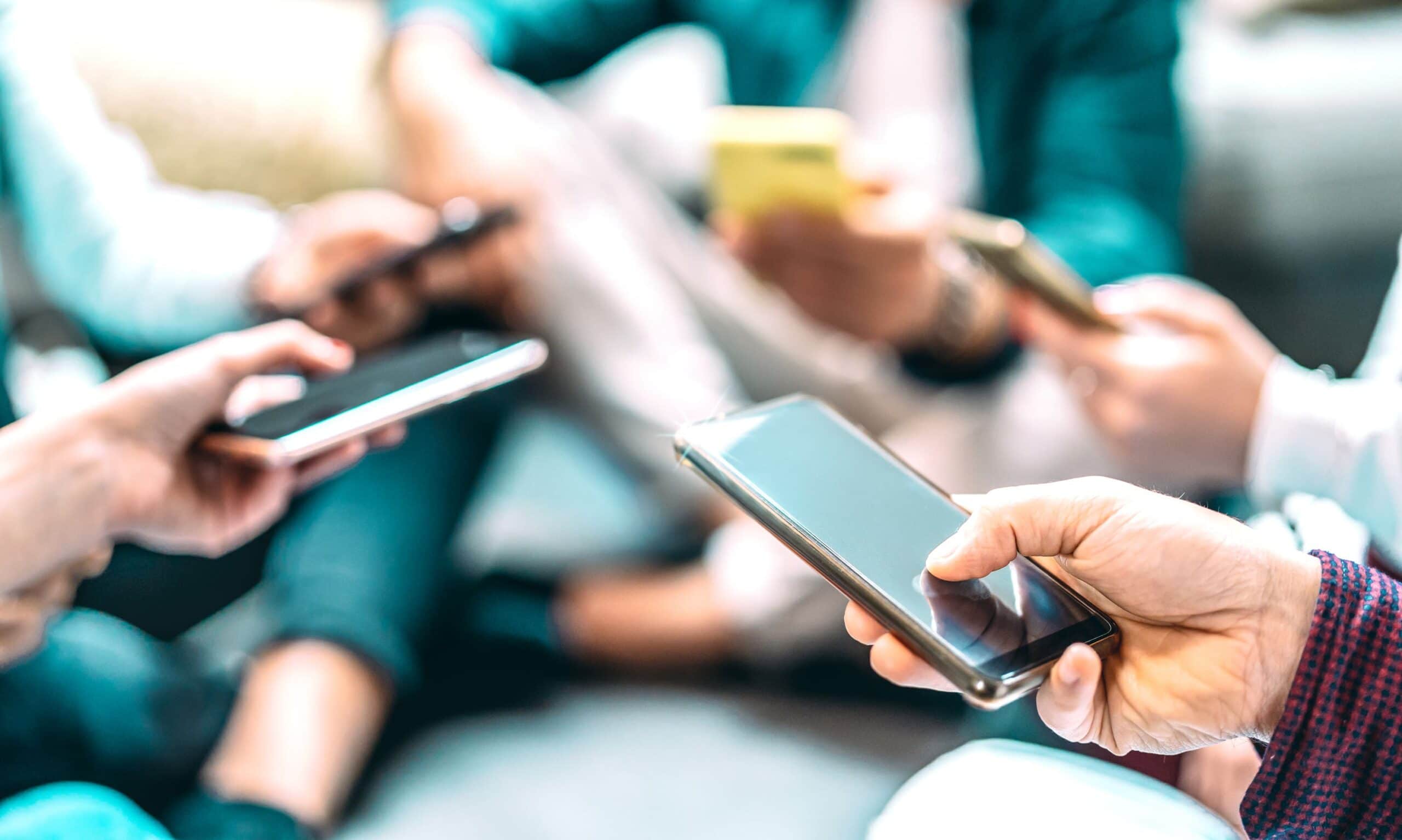How many times a day do you find yourself mindlessly picking up your phone? If you regularly get the uncontrollable itch to check your notifications when you should be doing something else, you’re not alone.
A new study has found that a third of young people, aged 18-30, have reported symptoms of smartphone addiction – and researchers say that the amount of cumulative time spent on a phone doesn’t actually make a difference.

A study of 1,043 people, by King’s College London, found that 39% had symptoms such as losing control over how long they spend on their phone, distress when they couldn’t access it and neglecting other areas of their life. More than two-thirds of the addicts had trouble sleeping too.
More and more, it seems we’re beginning to understand the damaging effects of limitless smartphone usage, which is why it pays to have some self-care strategies in place. Here’s how to do just that…
1. Fade to grey

Devoid of colour, your phone is no less functional, but it’s a lot less appealing to your brain. Pamela Roberts, Priory psychotherapist (priorygroup.com) says: “Turn your phone to greyscale (most phones have this setting) and turn off all notifications, too.”
“Draining colour from your smartphone will help improve your concentration and reduce its appeal to your eye,” Roberts notes. “Basically, it makes it seem more drab and less loud.”
When you’re in company, Roberts also advises turning your phone off completely and fully engaging with your companion. Knowing your phone is off-limits should help you to avoid spending time scrolling.
2. Leave your phone ‘home alone’

Whether it’s on your daily walk for fresh air or your trips to the supermarket, Roberts advises having periods where you physically leave your phone at home.
“There will likely be psychological withdrawals, so you may need the support of friends and family to help manage the restlessness, irritability and discontent that will arise from weaning yourself off your phone,” she notes.
“To help, buddy up with a friend who also wants to reduce their phone time. There is strength in numbers. Agree to treat yourselves to a latte or hot chocolate and a long walk without your tech.”
3. Change your lockscreen wallpaper

Your lockscreen isn’t just for pictures of cute animals, it can act as a useful digital deterrent too. “You could try uploading a photo with the words ‘Isn’t there a better way to spend my time?’ – or another powerful inspiration quote,” says Roberts.
“This kind of message will remind you that you don’t want your time to endlessly slip away while staring at social media.”
4. Out of sight, out of mind

Are you guilty of having your phone next to you at your desk? It might be time to put some physical space between you and your addiction.
“Try and create that division between yourself and your device,” says Dr Rachael Kent, who is a lecturer in Digital Economy and Society Education at King’s College London (drdigitalhealth.co.uk).
“Putting it in a drawer or another room can stop you from getting into that compulsive cycle of habitually picking up your phone and scrolling.”
5. Prioritise intentional phone use

“If you do find yourself picking up your phone a lot, make sure you’re using it for more than one reason,” says Dr Kent.
Rather than unlocking your screen to check Instagram, she says that you should consciously wait until you have a good reason to access your phone – like sending an important email.
“You waste a lot of time by opening your phone again and again, so batch your tasks together, so you aren’t glued to your screen, which can cause you to go down the rabbit hole of compulsive scrolling.”
6. Get to the heart of the problem

Some phones now have screen time settings that allow you to set limits for individual apps, like WhatsApp and Instagram.
“Wellbeing settings that limit how much time you spend on an app can be useful, but sometimes, it can be like putting a plaster over the problem,” says Kent. “Instead, I think it’s about setting your own habits.”
Kent suggests analysing how you’re feeling when you use your phone, especially when you’re in a cycle of compulsively picking it up. Are you feeling unstimulated by your job, or could you be avoiding dealing with a problem at home?
“Setting some mental parameters is really important, as it shows that you’re aware of when your smartphone use is becoming addictive and damaging to your own mental health.”

Kent adds: “Unfortunately, our phones are our leisure tools and our work tools right now. And at the moment, we’re going through a collective national trauma, so we’re using our phones for sociality and support too.”
Kent stresses that all of this is completely fine and natural. “It’s important that we reach out to our friends, family and colleagues for support, while trying to bring these boundaries in place.
“So, if you do slip up into hours of scrolling one day, don’t beat yourself up about it – it’s about adopting those practices over time – and it takes at least 14 days to change a habit.
“Don’t try to moralise it,” she stresses. “Just try again tomorrow.”





